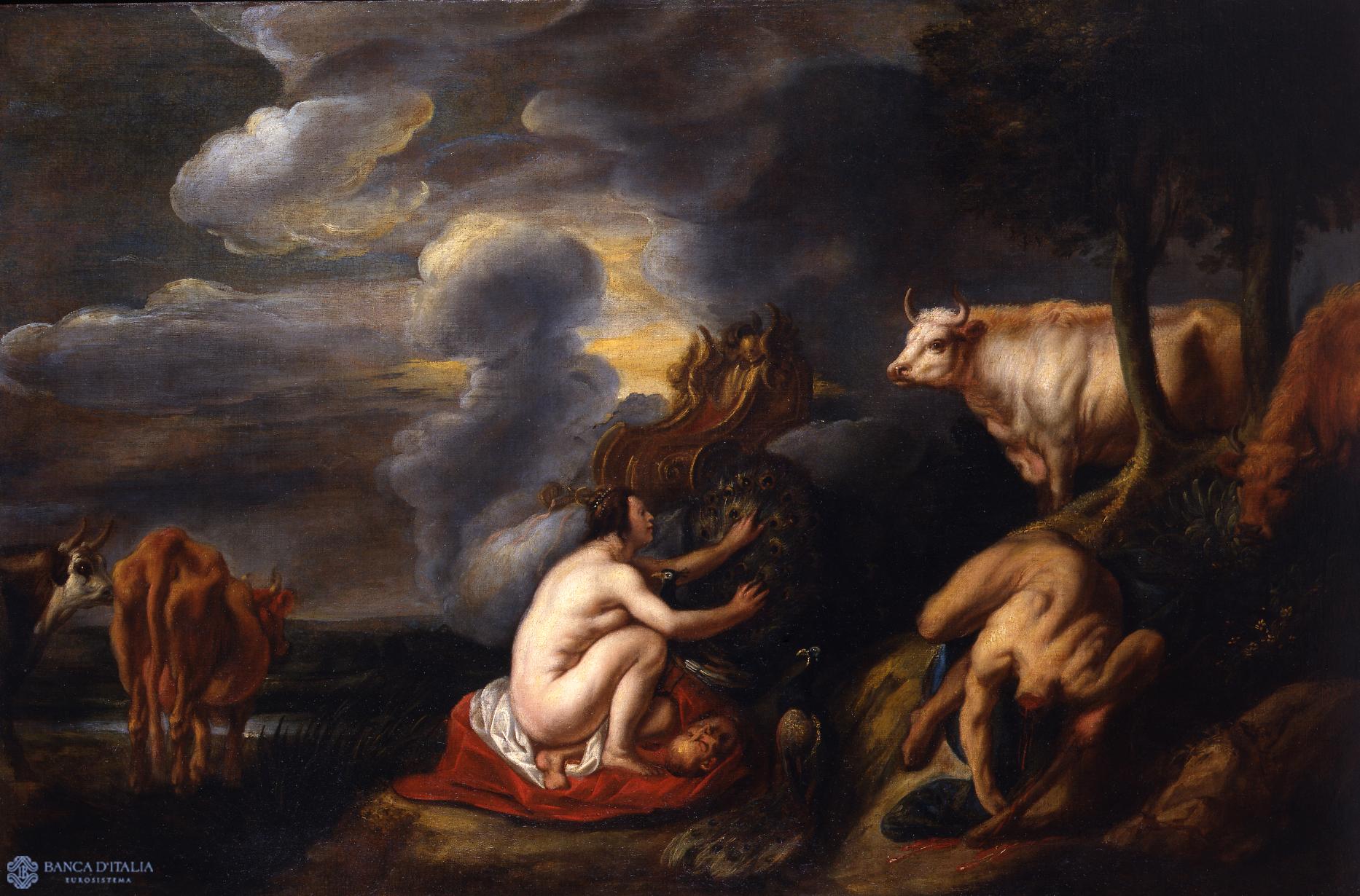The painting tells the story of Argus. The fabled giant with a hundred eyes was placed by Juno, depicted at the centre of the canvas, to guard over the young Io, who had been seduced by Jupiter and turned into a white cow. Jupiter sent Mercury to the aid of his beloved; by playing his flute the god’s messenger succeeded in getting Argus to close all his eyes. On the right, Mercury is depicted about to free Io after killing the giant and decapitating him. According to the myth, to honour Argus’s memory Juno placed his eyes on the tail of the peacock, who was consecrated to her from that moment on.
The style of the painting is typical of the Genoese school of the early seventeenth century and in fact Malò was active in that city for most of his life. The Frenchman’s colouring and brushwork reveal the Flemish influence of Jan Roos, who worked in Genoa from 1616 to 1638, and of Rubens, who is known to have had connections with the city from 1603 onward. Malò’s skilful portrayal of animals instead reflects his contact with the work of Giovanni Battista Castiglione, known as ‘Grechetto’, and Sinibaldo Scorza.
Vincenzo Malò, Giunone, Io ed Argo
Juno, Io and Argus
Painting
17th century AD
Biblical - Historical - Mythologic

Artist
Date
1640 ca.
Material and technique
Oil on canvas
Measurements
78 x 117 cm
Compiler
Alessandro Zuccari
